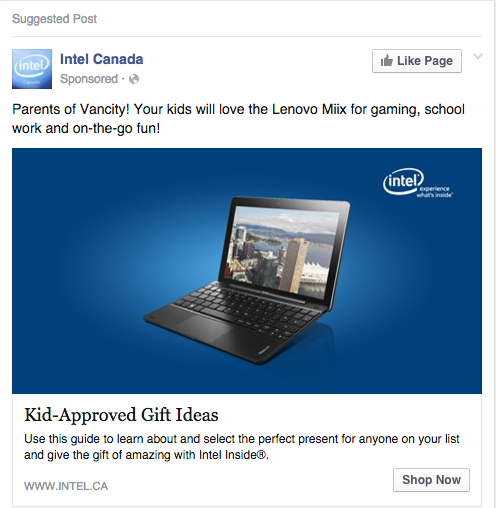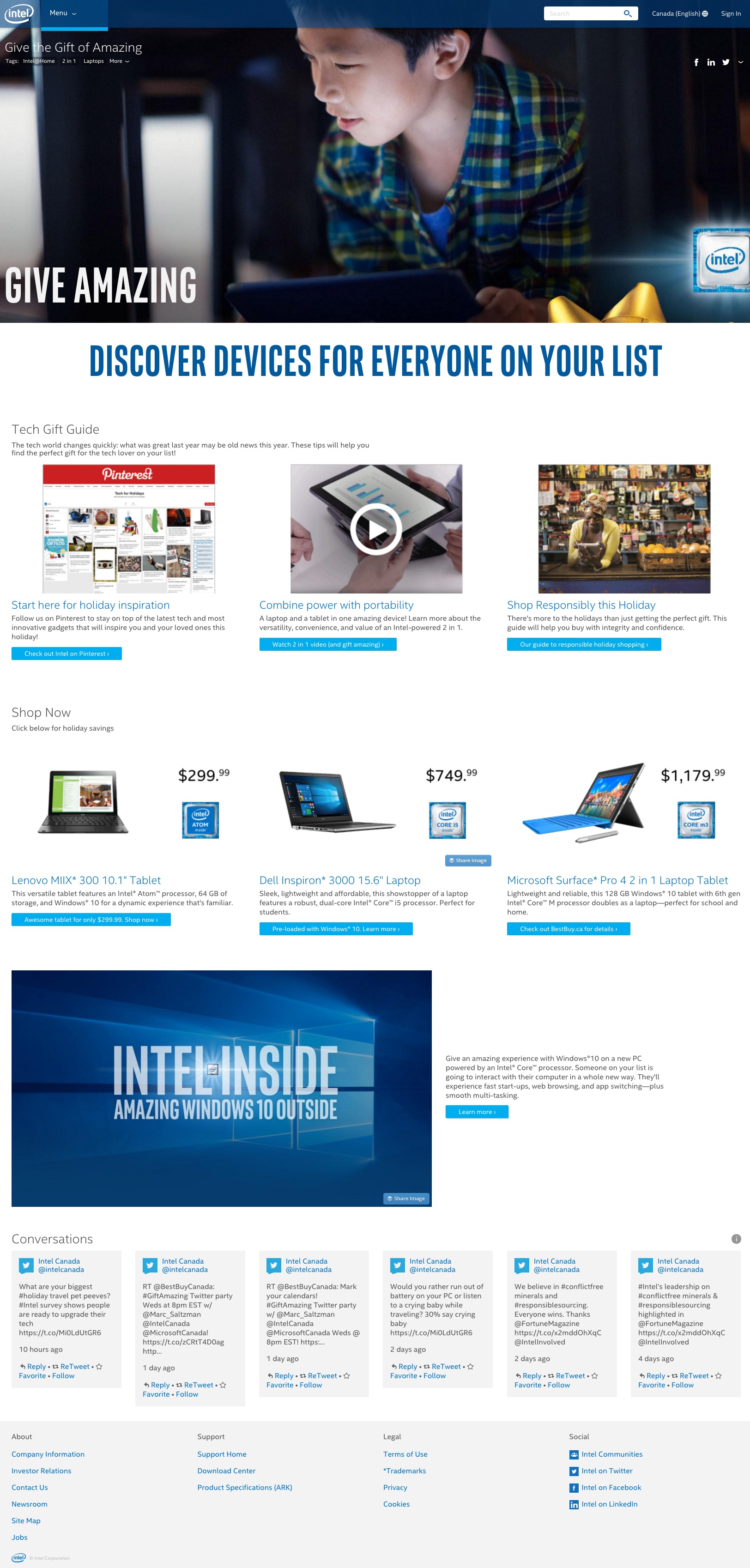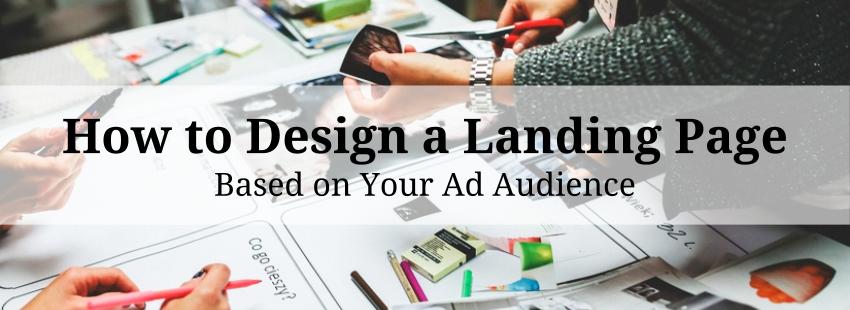There’s no point in spending a single dime on online ads unless you have a webpage ready to receive them.
It’s like walking a tight-rope without a net. Sure, you can do it, but it’s likely to end in a splat.
This article will take a look at both Google and Facebook Ads and their corresponding landing pages. I’ll look at two B2C combinations and two SaaS combinations. I’ll discuss the importance of holistic promotional campaigns and give some guidance on creating a target audience as well as ad and optimized landing page design.
Let’s get rolling!
Starting out with a holistic promotional campaign
There are two primary elements of holistic promotion that you need to keep in mind:
- Segmentation: If your business has multiple products, services, or clearly delineated target markets, segmentation is crucial in success. There’s no point in offering everything you have to everyone. Instead, break your business into manageable sections, based either on product or audience.
- Consistency: If your ad promotes Christmas presents for women, your landing page should be focused on Christmas presents for women. If your ad promotes your social media management tool for Twitter, your landing page should not be focused on your social media management tool for Facebook.
Segmentation and consistency are Rule 1 and 2 for holistic campaign optimization. Forget either of them and you’re throwing money out the window.
B2C Promotional Campaign Example #1: Intel Canada
The Facebook Ad:

Critiquing this Facebook Ad:
First off I notice that this ad is not for me. I’m not a “parent of Vancity!” And that’s dumb because, particularly if you’re paying by impression, I’m seeing an ad with messaging I have no chance of being interested in and Intel is wasting money by showing it to me.
Here’s how I’d target this Facebook Ad instead:

This is the most basic Facebook Ad targeting possible, as well. Given the difference in click-through rates for Facebook Ads and Google Ads, Facebook’s had to step up their targeting capabilities monumentally. Targeting by the age of a Facebook user’s children is nothing compared to some of what you can do with the tool.
The Landing Page:

Critiquing this Landing Page:
Firstly, this is a very generic page for Intel’s holiday promotional campaign. I would expect the landing page for an ad like the one above to repeat its message to parents.
Alternatively, run an ad focused on the message of “get a gift for everyone on your list.” But creating a audience-specific ad and sending them to a general landing page is a recipe for an average click-through-rate.
And you don’t want to be average, do you?
B2C Promotional Campaign Example #2: UncommonGifts
The Google Ad:

Critiquing this Google Ad:
I typed in “gifts for men” into Google and this was one of the top responses. I like the “men are so hard to buy gifts for” copy, which creates empathy for the searcher.
The use of extensions, as well, is awesome here: the phone number and the nav bar for “sports lovers,” “geeks,” “beer lovers,” etc is a really nice touch. This encourages searchers to hone in even more on the product they’re looking for.
The Landing Page:

Critiquing this Landing Page:
This is one of the best ecommerce landing pages I’ve encountered. The rules I mentioned above (segmentation and consistency) are clearly evident here. Unlike Intel, this page is clearly optimized to receive traffic searching on Google for “gifts for him.”
The target audience is interested in buying for their male loved one, and this page covers all the bases. If men are looking for themselves they’d be searching for a specific product, so UncommonGoods is pretty safe with the design of their page.
The page’s design, though nothing unusual, is well done:
- The search bar (correctly placed at the top of the page) has a contrasting button to attract the eye.
- Rather than logos, each subsection features a product example to entice visitors.
- The top banner clearly reads “men,” leaving no doubt to the fact that people who have come from the ad are in exactly the right place.
SaaS Promotional Example #1: Remarkety
The Facebook Ad:

Critiquing this Facebook Ad:
This ad is really good across the board. A lot of colors (particularly the Remarkety red logo) catch the eye, and the image communicates a lot quickly: the mobile phone communicates modern company as well as gives a glimpse of what they’re offering, and the image’s text (“grow sales up to 30%”) provides value.
The only thing that I’m wondering about is whether or not I received this particular Facebook Ad because I’m male (the model in the image, the hand, and the products on the phone all seem targeted towards a male ad recipient.
Did they create another ad with the same copy and design but for a female audience?
If not, they should have, at least to test it.
Here’s the Facebook Ad I’d design for women if I was running this promotional campaign:

Creating this ad took me all of 10 minutes and I’d be very curious to see the test results of running one ad to men (with the same interest targeting) and another to women.
The Landing Page:

Critiquing this Landing Page:
This is a standard SaaS landing page without any attention being paid to the source of traffic.
I have cut off the bottom part of the page for readability.
Here’s a few optimization tests I’d run based on the Facebook Ad:
- Change the background image to match the Facebook Ad (or at least something with the same feel)
- Reduce the image height (the video is below-the-fold on most screens)
- Reiterate the value proposition from the ad obviously: Grow sales up to 30% with email
- Move the benefit list (similar message to the ad) above the 3 customer testimonials
- Choose a different thumbnail for the video, and run it through a different video platform than YouTube (we at Wishpond love Wistia).
SaaS Promotional Example #2: Kentico
The Google Ad:

Critiquing this Google Ad:
When creating your Google Ad you have very little space to communicate what makes your business awesome or different. Kentico has chosen “24/7 support” (good) and “7-days bug fixing” (not so good).
Despite the fact that 7-days bug fixing almost sounds like it takes them 7 days to fix your bug, they’re also bringing to the fore the fact that their business has bugs – enough bugs, indeed, to be the focus of their promotional campaign.
I do like the “25,000 websites in 100 countries” thing, which functions similarly to a customer testimonial to tell prospective customers “if other people have used us successfully, you can too.”
But the ad extensions are a bit odd: webinars, licensing and their hosted trial.
Consider it this way: If I’m searching for a CMS platform (which I was, based on the keywords I entered to see this ad) I’m not interested in licensing or webinars – unless I type in “CMS licensing” or “CMS webinars.” If that were the case, I’d recommend separate ads and landing pages for those elements of their service.
The Landing Page:

Critiquing this Landing Page:
This landing page (actually a squeeze page is actually pretty damn good. It doesn’t beat around the bush (form is front and center), which is excellent A) When your target market is professionals and know exactly what they’re getting into and B) When your Ask is relatively easy to say yes to (a 7-day trial without downloading or installing).
I’ve taken the liberty of redesigning Kentico’s landing page (and stolen a few things in the process) to be a bit more optimized:

Luckily, Wishpond’s landing page builder is pretty straightforward. This only took me about 20 minutes to do.
And that’s a crucial component of any promotional campaign: The ability to duplicate pages is absolutely essential.
Unless you’re working with a landing page tool which makes the build process simple, it’s impossible to design as many segmented, consistent and campaign-specific landing pages as you need to run an optimized marketing funnel.
Wrapping it Up
Hopefully this article has given you a bit of insight into creating a holistic ad and landing page campaign. As I’ve said before, one without the other makes both useless.
If you have any questions about how to set up your own promotional campaign, reach out in the comment section below. I’m not an Adwords expert, but I know my way around Facebook ads and landing page CRO.
Related Reading:
- Landing Page FAQ: What’s the Difference Between a Landing Page and a Squeeze Page?
- 17 Landing Page Examples Reviewed with A/B Testing Ideas
- 5 Facebook Ad and Landing Page Combinations Critiqued
- 13 Facebook Ads We Got That Were Right on the Money (and Why)
- The Data-Driven Guide to Landing Page Design [Infographic]
- 5 Genuine Conversion Rate Optimization Hacks We’ve Seen Work
- 50 A/B Split Test Conversion Optimization Case Studies

